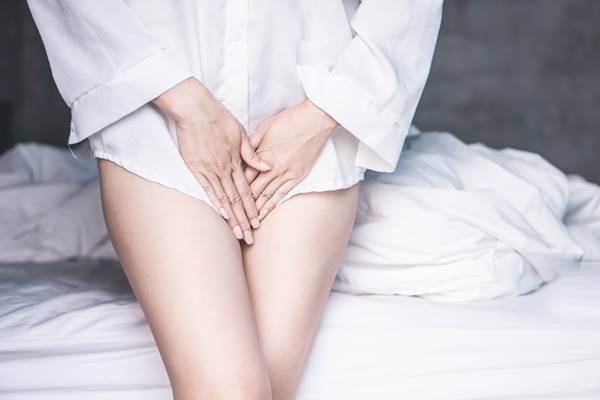Vaginal varicose veins, also known as vulvar varicosities, are a relatively common but often overlooked condition affecting women during pregnancy or after childbirth. These enlarged and twisted veins develop in the vulva area, causing discomfort and distress for many women. While varicose veins commonly occur in the legs, their presence in the vaginal area is less well-known.
The exact cause of vaginal varicose veins is not fully understood, but it is believed to be primarily influenced by hormonal changes and increased blood volume during pregnancy.
The weight of the growing uterus can also contribute to added pressure on pelvic blood vessels.
Symptoms of vaginal varicose veins may include pain, swelling, itchiness, and a feeling of heaviness in the genital region. Although not typically dangerous or life-threatening, they can significantly impact a woman’s quality of life.

Causes and Risk Factors of Vaginal Varicose Veins
Vaginal varicose veins, also known as vulvar varicosities, are a common yet often overlooked condition affecting women during pregnancy. The causes and risk factors of vaginal varicose veins can be attributed to a combination of anatomical and physiological changes that occur in the body during pregnancy.
One primary cause is increased blood volume and hormonal changes, specifically the hormone progesterone, which relaxes the walls of blood vessels. This relaxation can lead to weakened vein valves and impaired blood flow, resulting in the development of varicose veins in the vaginal area.
Additionally, the growing uterus exerts pressure on pelvic veins, obstructing normal blood flow and causing veins to enlarge.
Factors such as multiple pregnancies, obesity, a family history of varicose veins, advanced maternal age, prolonged standing or sitting positions throughout the day may further increase the risk of developing vaginal varicosities.
Signs and Symptoms of Vaginal Varicose Veins
The signs and symptoms of vaginal varicose veins can vary from person to person. Some women may experience visible purple or bluish bulging veins in the vulva, which may become more prominent during pregnancy or after prolonged standing or physical exertion.
These enlarged veins may also cause a feeling of fullness or heaviness in the pelvic area.
Other common symptoms include itching or irritation around the vaginal region, especially during periods of increased blood flow such as menstruation.
Some women may also experience pain or discomfort during sexual intercourse.
Diagnosis And Medical Evaluation Of Vaginal Varicose Veins
When a woman presents with symptoms suggestive of vaginal varicose veins, a thorough medical evaluation is essential for accurate diagnosis and appropriate management. The diagnostic process typically begins with a detailed medical history and physical examination. The healthcare provider may inquire about the patient’s symptoms, such as pelvic pain or discomfort, increased vaginal pressure, or visible swollen veins in the genital region.
During the physical examination, the healthcare provider may assess the appearance of the vaginal area and palpate for any enlarged veins. Further evaluation may involve specialized imaging techniques to confirm the presence of vaginal varicose veins. Doppler ultrasound is often used as a non-invasive method to visualize blood flow in the affected area and identify any abnormalities. In some cases, other imaging modalities like magnetic resonance imaging (MRI) or computed tomography (CT) scans may be utilized to provide more detailed information.
Treatment Options For Vaginal Varicose Veins
When it comes to managing vaginal varicose veins, there are several treatment options available. The choice of treatment depends on the severity of symptoms and individual preferences.
One commonly used approach is conservative management, which includes lifestyle modifications such as avoiding prolonged standing or sitting, wearing compression garments, and engaging in regular exercise to improve blood circulation. These measures can help alleviate discomfort and prevent the condition from worsening.
For more severe cases, medical interventions may be necessary. Sclerotherapy is a minimally invasive procedure that involves injecting a solution into the affected veins to close them off. Another option is endovenous laser ablation, which uses laser energy to seal the problematic veins.
In rare instances where symptoms persist despite conservative measures or when complications arise, surgical intervention such as vein ligation or stripping may be considered.
Prevention And Lifestyle Modifications For Vaginal Varicose Veins
While vaginal varicose veins can be a common occurrence during pregnancy, certain preventive measures and lifestyle modifications can help alleviate symptoms and reduce the risk of developing this condition.
Firstly, maintaining a healthy weight through regular exercise can minimize the strain on the pelvic region and improve blood circulation. Avoiding prolonged periods of standing or sitting and elevating the legs whenever possible can also prevent excessive pressure on the veins.
Wearing compression stockings that provide graduated compression can promote proper blood flow and support weakened veins.
Additionally, incorporating a diet rich in fiber to prevent constipation is crucial as straining during bowel movements can exacerbate varicose veins.
Lastly, engaging in regular pelvic floor exercises, such as Kegels, can strengthen the muscles around the vagina and potentially reduce symptoms associated with vaginal varicose veins.
Outlook And Complications Of Vaginal Varicose Veins
While vaginal varicose veins can be uncomfortable and distressing, the outlook for most women with this condition is generally positive. In many cases, these veins resolve on their own after childbirth, as hormonal changes and increased blood flow return to normal levels. However, in some instances, the veins may persist or worsen over time.
Complications associated with vaginal varicose veins are rare but can occur.
These include increased pain or discomfort during intercourse, persistent swelling or inflammation of the vulva, and a higher risk of developing blood clots. It is important for women experiencing these symptoms to consult with their healthcare provider for appropriate diagnosis and treatment options.
Fortunately, various conservative measures can help manage vaginal varicose veins effectively. These may include wearing compression stockings, practicing pelvic floor exercises to improve circulation, avoiding prolonged standing or sitting positions, and applying cold packs to alleviate discomfort.